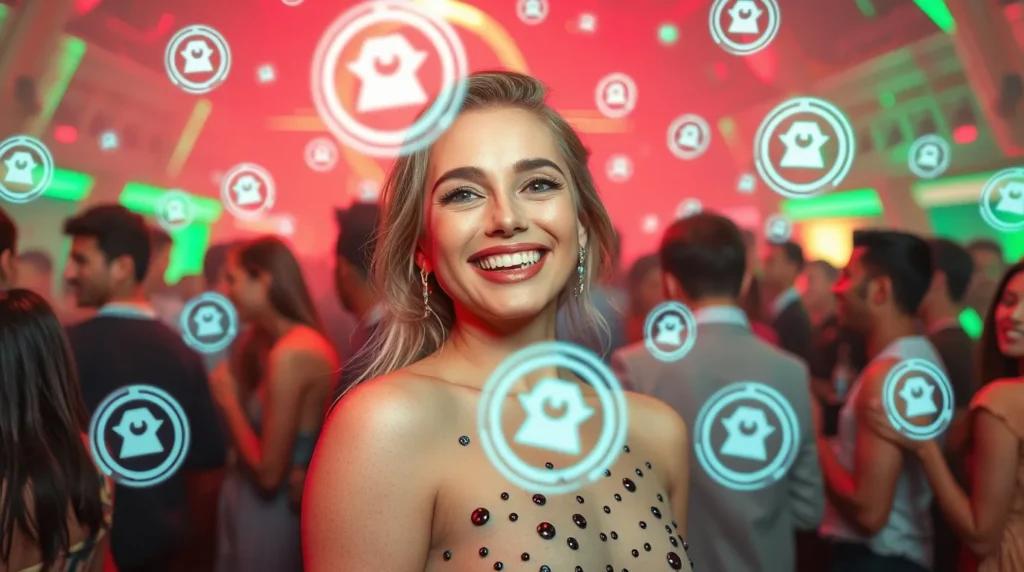Table of Contents
Introduction
How Powerful ChatGPT Works Behind the Scenes: Welcome to the world of ChatGPT, where cutting-edge technology meets human-like conversation. This powerful AI language model has taken the digital landscape by storm, reshaping how we interact with machines. But what fuels this remarkable innovation? In this article, we’ll delve into how ChatGPT works step by step and uncover its underlying architecture. From understanding its neural network to exploring real-world applications, we’re set for an insightful journey under the hood of ChatGPT in 2025. Get ready to demystify the inner workings of one of today’s most exciting technological advancements!

How Powerful ChatGPT Works Behind the Scenes
ChatGPT is built on advanced machine learning techniques, specifically designed to understand and generate human-like text. At its core lies a transformer architecture that enables the model to process language efficiently. This structure allows ChatGPT to analyze context and produce coherent responses.
The inner workings involve layers of neural networks that learn from vast datasets. This training equips ChatGPT with the ability to recognize patterns in language, enhancing its conversational abilities.
As it processes input, ChatGPT generates text by predicting the next word based on previous tokens. This step-by-step approach creates engaging dialogues tailored to user queries while maintaining relevance throughout the conversation.
What is ChatGPT?
ChatGPT is an advanced AI language model developed by OpenAI. It utilizes deep learning techniques to understand and generate human-like text based on given prompts. This technology allows for engaging conversations, content creation, and more.
At its core, ChatGPT is built on the Transformer architecture. This structure enables it to process vast amounts of data efficiently and learn contextual relationships within languages. As a result, it can produce coherent and relevant responses.
Designed to assist users across various applications, ChatGPT has quickly gained popularity in industries like customer service, education, and entertainment for its versatility and effectiveness.

How ChatGPT Works
ChatGPT operates on a powerful neural network architecture known as the transformer model. This design enables it to process and generate human-like text based on the input it receives. It captures context by analyzing sequences of words, understanding relationships within them.
When you input a query, ChatGPT breaks down your request into tokens—small chunks of language. These tokens are then fed through layers of interconnected nodes in the neural network. Each layer refines the understanding of context and meaning.
ChatGPT generates responses by predicting which token should follow based on its training data, ensuring coherent and contextually relevant interactions.
When was ChatGPT Released
ChatGPT was first released by OpenAI in November 2022. This marked a significant milestone in the development of AI language models, showcasing advanced conversational abilities.
Originally based on the GPT-3 framework, it quickly gained attention for its human-like interaction and versatility.
Since then, ChatGPT has undergone several updates and refinements. These improvements have enhanced its capabilities, making it more effective in understanding context and generating relevant responses to user queries.

Understanding ChatGPT Models
ChatGPT models are built on advanced neural network architectures, specifically the transformer model. This architecture allows for efficient processing of language by capturing complex relationships and contextual nuances.
There are several versions of ChatGPT, each improving upon its predecessor in terms of training data size and computational power. These enhancements lead to more accurate responses and greater versatility in conversations.
The models operate by predicting the next word in a sentence based on the context provided by previous words. This predictive capability enables ChatGPT to generate coherent text that mimics human-like conversation effectively.
Exploring ChatGPT Architecture
ChatGPT architecture is rooted in the transformer model, a groundbreaking design that revolutionizes how machines understand language. The core of this architecture consists of multiple layers of attention mechanisms. These layers allow ChatGPT to evaluate and prioritize different words and phrases based on context.
Each layer processes input data sequentially, refining it for better accuracy. This layered approach enables the model to grasp intricate relationships between words. Hence, it can generate coherent responses effectively. How Powerful ChatGPT Works Behind the Scenes.
Moreover, the architecture employs positional encoding to maintain word order significance. This ensures that even complex sentences are interpreted correctly during language processing tasks.

ChatGPT Applications
ChatGPT has diverse applications across various sectors. Businesses leverage it for customer support, providing instant responses to inquiries. This enhances user experience and boosts engagement.
In education, ChatGPT serves as a tutoring assistant, helping students grasp complex concepts or practice language skills. Its ability to generate explanations makes learning interactive and accessible. How Powerful ChatGPT Works Behind the Scenes.
Content creators also benefit from ChatGPT by generating ideas, drafting articles, or even crafting social media posts. The AI’s versatility allows professionals to streamline their workflows while maintaining creativity in their outputs.
ChatGPT Limitations
ChatGPT, while impressive, has notable limitations. One significant challenge is its occasional generation of incorrect or nonsensical information. This arises from the model’s reliance on patterns learned during training rather than real-time facts.
Another limitation lies in understanding context. ChatGPT can misinterpret nuanced prompts, leading to irrelevant or off-topic responses. This can hinder effective communication and user experience. How Powerful ChatGPT Works Behind the Scenes.
Additionally, it struggles with maintaining long-term coherence in conversations. As dialogues evolve, remembering past exchanges becomes difficult for the model, resulting in repetitive or inconsistent replies throughout interactions.

ChatGPT Cost and Features
ChatGPT offers a range of pricing plans to cater to different user needs. The basic version is free, providing users with access to essential features and functionalities. However, for those seeking enhanced capabilities, the subscription model unlocks advanced options.
The paid tier includes priority access during peak times and faster response rates. Users also benefit from improved accuracy in text generation, making it ideal for professional applications. How Powerful ChatGPT Works Behind the Scenes.
Certain features might vary based on updates or regional availability. Staying informed about these changes ensures that users maximize their experience with ChatGPT while effectively managing costs.
The Evolution of ChatGPT
ChatGPT has undergone significant evolution since its inception. The journey began with early language models that laid the groundwork for more advanced systems. These models focused on generating coherent text but had limitations in understanding context.
With each iteration, improvements were made to enhance accuracy and fluency. The introduction of transformer architecture marked a turning point, allowing ChatGPT to process large datasets efficiently while grasping nuances in human language.
Recent versions have integrated user feedback and fine-tuning techniques. This ongoing development ensures ChatGPT remains relevant and effective, adapting seamlessly to diverse applications across industries. How Powerful ChatGPT Works Behind the Scenes.

Conclusion: The Future of ChatGPT
The future of ChatGPT is undeniably exciting. As AI technology continues to evolve, we can expect more advanced iterations that enhance natural language understanding. Future models may provide increased contextual awareness, enabling even more personalized interactions.
Improvements in training data and algorithms will likely refine how ChatGPT processes language. This means a better grasp of nuanced conversations and complex queries. Additionally, with growing emphasis on ethical AI use, future versions could incorporate robust safeguards to ensure responsible deployment. How Powerful ChatGPT Works Behind the Scenes.
As businesses explore innovative applications for ChatGPT—from customer support to content creation—the potential impact on various industries is immense. The journey of mastering the mechanics behind this powerful tool has just begun, opening doors to endless possibilities in human-AI collaboration.
Frequently Asked Questions (FAQs)
What is ChatGPT?
ChatGPT is a state-of-the-art AI language model developed by OpenAI. It uses deep learning—specifically transformer neural networks—to understand prompts and generate human‑like text. How Powerful ChatGPT Works Behind the Scenes.
Which architecture underpins ChatGPT?
ChatGPT is based on the Transformer architecture, featuring multiple layers of self‑attention and feed‑forward networks that allow it to capture complex language patterns and long‑range dependencies. How Powerful ChatGPT Works Behind the Scenes.
How does ChatGPT process input text?
Input is tokenized into subword units; these tokens are embedded and passed through the transformer’s attention layers, where contextual relationships are computed at each layer before producing a representation used for generation. How Powerful ChatGPT Works Behind the Scenes. How Powerful ChatGPT Works Behind the Scenes.
What does “self‑attention” mean?
Self‑attention is a mechanism where each token “looks at” all others in the sequence to weigh their importance, enabling the model to capture which words influence each other most in context. How Powerful ChatGPT Works Behind the Scenes. How Powerful ChatGPT Works Behind the Scenes. How Powerful ChatGPT Works Behind the Scenes.
How does ChatGPT generate responses?
It predicts the next token in a sequence, one at a time, using probabilities derived from its trained weights. Sampling strategies (e.g., top‑k, nucleus sampling) then select the actual output token. How Powerful ChatGPT Works Behind the Scenes. How Powerful ChatGPT Works Behind the Scenes.

How can I use ChatGPT for contract review to streamline the process and identify key risks?
Answer:
You can leverage ChatGPT to make contract review faster and more insightful by:
Summarizing Key Terms:
– Prompt example: “Summarize the key obligations, deadlines, and payment terms in this contract.”
ChatGPT will distill lengthy clauses into concise bullet points, helping you grasp the essentials at a glance.
Flagging Risky Clauses:
– Prompt example: “Identify any indemnity, limitation of liability, or termination provisions that could pose a high risk to my company.”
It highlights common red‑flags—such as broad indemnification requirements or auto‑renewal clauses—so you can focus your legal review.
Suggesting Alternative Wording:
– Prompt example: “Rephrase this non‑compete clause to narrow its geographic scope and duration.”
ChatGPT offers revised language that balances your interests with the counterparty’s needs.
Comparing Versions:
– Prompt example: “Compare version A and version B of this NDA and list the differences in confidentiality obligations.”
It outlines textual changes and calls out any subtle shifts in responsibility or exposure. How Powerful ChatGPT Works Behind the Scenes.
Generating Commentaries and Questions:
– Prompt example: “Generate a list of five questions I should ask the counterparty before signing this service agreement.”
You’ll get targeted inquiries—e.g., “Can we cap liquidated damages at 10% of total fees?”—to clarify ambiguous points.
Extracting Definitions:
– Prompt example: “List all defined terms and their meanings from this contract.”
It pulls out terms like “Effective Date,” “Confidential Information,” and “Force Majeure,” making it easy to reference.
Ensuring Consistency:
– Prompt example: “Check if the defined term ‘Affiliate’ is used consistently throughout the agreement.”
ChatGPT spots mismatches or undefined uses, helping you avoid drafting oversights.
Drafting Summary Memos:
– Prompt example: “Write a one‑page executive summary of this master services agreement, highlighting key deliverables and payment milestones.”
You can quickly share clear overviews with stakeholders who need the bottom line. How Powerful ChatGPT Works Behind the Scenes.
Supporting Due Diligence:
– Prompt example: “What are the typical due diligence questions for a software licensing agreement?”
It provides industry‑standard checklists, ensuring you don’t miss critical compliance or IP considerations.
Saving Time on Routine Tasks:
– Prompt example: “Format this list of contract dates into a table with columns for Event, Date, and Responsible Party.”
You’ll get neat, structured tables ready to drop into your review tracker. How Powerful ChatGPT Works Behind the Scenes.
By integrating ChatGPT into your contract‑review workflow, you can handle repetitive analysis tasks quickly, surface potential issues more reliably, and devote more time to nuanced legal judgment. Always have a qualified attorney review final drafts and advise on complex matters—ChatGPT is an assistant, not a substitute for professional legal counsel.
How can law firms leverage ChatGPT for legal marketing to attract clients and build their online authority?
Answer:
ChatGPT can be a powerful ally in crafting and scaling your legal marketing efforts. Here’s how to use it effectively while maintaining ethical and professional standards:
1. Content Creation for Blogs and Articles
Prompt example: “Write a 700‑word blog post on the top 5 estate planning mistakes to avoid.”
Benefit: Generates informative, SEO‑friendly articles that demonstrate your expertise and improve search rankings.
How Powerful ChatGPT Works Behind the Scenes.
2. SEO Keyword Research and Optimization
Prompt example: “Suggest 15 long‑tail keywords related to personal injury law with monthly search volumes and difficulty levels.”
Benefit: Identifies high‑value search phrases; ChatGPT can then weave them naturally into headlines, meta descriptions, and body text.
3. Social Media Posts and Calendars
Prompt example: “Create a month’s worth of LinkedIn posts for a family‑law firm, mixing client tips, case studies, and firm updates.”
Benefit: Keeps your social channels active and engaging without the time investment of crafting each post from scratch. How Powerful ChatGPT Works Behind the Scenes.
4. Email Newsletters and Drip Campaigns
Prompt example: “Draft a 5‑email welcome series for new subscribers interested in employment law updates.”
Benefit: Automates nurturing your leads with consistent, value‑packed messaging that guides prospects toward booking a consultation.
5. Client‑Facing Chatbot Scripts
Prompt example: “Write a friendly chatbot dialogue for potential clients asking about your personal injury services, including triage questions.”
Benefit: Delivers instant, 24/7 engagement on your website, qualifies leads, and collects contact info before handing off to your intake team. How Powerful ChatGPT Works Behind the Scenes.
6. Ad Copy for Google and Social Ads
Prompt example: “Generate 5 variations of Facebook ad headlines and descriptions promoting free initial consultations for DUI defense.”
Benefit: Provides A/B‑testable options that can increase click‑through rates and reduce cost‑per‑lead.
7. FAQs and Knowledge Bases
Prompt example: “List the top 10 FAQs about starting a small business entity and draft concise, authoritative answers.”
Benefit: Builds out your site’s FAQ pages to capture “People Also Ask” traffic and position your firm as a go‑to resource. How Powerful ChatGPT Works Behind the Scenes.
8. Client Testimonials and Case Study Outlines
Prompt example: “Outline a compelling case study for a successful slip‑and‑fall claim, highlighting the challenge, our strategy, and the outcome.”
Benefit: Showcases real‑world results and social proof in a polished, narrative‑driven format.
9. Video Scriptwriting
Prompt example: “Write a 2‑minute video script explaining the process of filing for bankruptcy, in a clear, empathetic tone.”
Benefit: Speeds up the production of informative videos that can be repurposed across YouTube, your website, and social media. How Powerful ChatGPT Works Behind the Scenes.
10. Ensuring Compliance and Tone
Prompt example: “Revise this marketing blurb to ensure it complies with ABA advertising rules and maintains a professional yet approachable tone.”
Benefit: Helps you adhere to ethical guidelines, avoid unverified claims, and maintain your firm’s reputation.
By integrating ChatGPT into your legal marketing workflow, you can produce high‑quality content at scale, stay consistent across channels, and free up your team to focus on strategic initiatives and client service. Always review AI‑generated copy for accuracy, compliance, and alignment with your brand voice before publishing. How Powerful ChatGPT Works Behind the Scenes.
how to use chatgpt for sports betting?
Using ChatGPT to inform your sports‑betting decisions can help you organize data, explore strategies, and manage risk—but remember it can’t predict outcomes or guarantee profits. Here’s how to make the most of ChatGPT in a responsible way:
1. Gather and Prepare Data
Collect historical stats
Compile team/player performance metrics (win‑loss records, head‑to‑head results, home/away splits, recent form).
Format your data
Put key stats into a simple table or bullet list so you can paste them into a prompt.
Prompt example:
“Here’s a table of Team A vs. Team B over the past five games:
Team A: 4 wins, average 110 points scored, 105 allowed
Team B: 2 wins, average 102 points scored, 108 allowed
Summarize which factors might give Team A an edge.”
How Powerful ChatGPT Works Behind the Scenes.
2. Ask for Statistical Insights
Use ChatGPT to highlight trends or anomalies:
Performance summaries
“Summarize Team X’s performance in the last 10 away games, focusing on scoring and defensive efficiency.”
Comparative analysis
“Compare the offensive strengths of Player Y and Player Z based on these season averages.”
How Powerful ChatGPT Works Behind the Scenes.
3. Explore Betting Strategies
ChatGPT can outline common strategies—but always adapt them to your own research:
Value betting
“Explain how to identify value bets when the bookmaker’s odds seem to underestimate a team’s true win probability.”
Kelly criterion
“Show me how to calculate optimal stake size using the Kelly formula given a 55% chance of winning and bookmaker odds of 1.90.”
How Powerful ChatGPT Works Behind the Scenes.
4. Run “What‑If” Simulations
While ChatGPT can’t simulate thousands of Monte Carlo trials directly, it can help you set one up:
Prompt example:
“I have a 60% win probability for Team A. If I bet $100 on five independent matches, what’s the probability I finish up overall in profit?”
(ChatGPT will outline the binomial calculation for you.)
How Powerful ChatGPT Works Behind the Scenes.
5. Craft Clear Betting Prompts
Be explicit about what you need:
Odds interpretation
“Convert decimal odds 2.50 into implied probability and explain whether this represents value if actual win chance is 45%.”
Risk assessment
“Given a bankroll of $1,000 and a perceived edge of 5%, suggest a staking plan.”
How Powerful ChatGPT Works Behind the Scenes.
6. Manage Bankroll and Emotions
Ask ChatGPT to help you draft rules to keep you disciplined:
Prompt example:
“Help me write a five‑point bankroll management plan that limits my risk per bet to 2% and enforces a three‑loss stop.”
How Powerful ChatGPT Works Behind the Scenes.
7. Stay Up to Date
While ChatGPT’s training data cuts off, you can feed it fresh news:
Provide recent headlines
“Here are last night’s injury updates for Team A: [list]. How might this affect their probability against Team B?”
Combine with live data
Pull in live odds yourself, then ask ChatGPT to recalculate implied probabilities and value.
How Powerful ChatGPT Works Behind the Scenes.
8. Evaluate and Iterate
After each betting round:
Log your bets (date, event, stake, odds, outcome).
Ask for performance analysis:
“I placed 30 bets, with a 52% hit rate and average odds of 1.95. Summarize my ROI and suggest adjustments.”
How Powerful ChatGPT Works Behind the Scenes.
9. Understand the Limits
No fortune‑telling: ChatGPT offers statistical reasoning, not psychic predictions.
Bias and errors: It may misinterpret data or omit critical context—always double‑check.
Responsible gambling: Set loss limits, take breaks, and seek help if betting becomes problematic.
10. Integrate with Other Tools
For more advanced analysis, combine ChatGPT’s narrative insights with:
Spreadsheet software (for automated ROI tracking)
Dedicated analytics platforms (for in‑depth metrics and visualization)
How Powerful ChatGPT Works Behind the Scenes.
Bottom Line: ChatGPT is a powerful helper for organizing your research, understanding betting concepts, and managing your strategy—but it’s only one tool in your toolbox. Always supplement its guidance with reliable data sources, practical experience, and sound bankroll management. Good luck, and bet responsibly!
What is ChatGPT Team?
ChatGPT Team refers to a secure collaborative environment enabling multiple users to share access and manage conversations under a unified workspace. It facilitates role-based permissions, centralized billing, and detailed analytics insights for organizational usage. Teams can assign members to customize models, monitor usage metrics, and streamline AI-assisted workflows across departments.
What happens on the ChatGPT Codex Reddit community?
On Reddit, the ChatGPT Codex community shares coding experiments, prompt engineering techniques, and integration tips. Users discuss fine-tuning, showcase projects that blend ChatGPT capabilities with code generation, and troubleshoot API usage. It fosters collaboration among developers, providing feedback loops, best practices, and open‑source examples to advance AI‑assisted programming workflows innovations.
What is the Codex subreddit on Reddit?
Reddit’s Codex subreddit is a hub for discussing OpenAI’s Codex model, sharing code generation prompts, addressing debugging challenges, and exploring creative applications. Members exchange tutorials, benchmark results, and integration strategies. It hosts community events, resource curation, and best practices discussions. Participants post sample code, request reviews, and share project showcases.
What is ChatGPT Plus?
ChatGPT Plus is OpenAI’s subscription tier offering enhanced performance, faster response times, and priority access during peak usage. Subscribers benefit from early feature previews, increased usage limits, and dedicated customer support. Priced monthly, it caters to heavy users requiring reliability and consistent AI assistance across diverse applications, supporting professional workflows.

3 thoughts on “Mastering the Mechanics: How Powerful ChatGPT Works Behind the Scenes 2025⚡️💬”